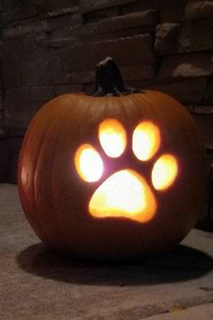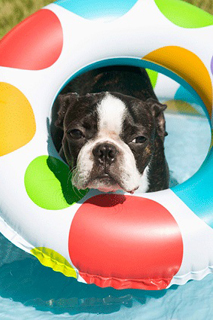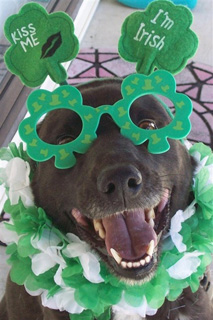Louie the poodle demands to prepare his own supper because only he knows the ratio of the wet and dry food that he prefers. He will decline to consume if any other person mixes his food.
Archive for the ‘Pet Health’ Category
Poodle Eating Ritual
Wednesday, August 6th, 2014URGENT: 3 Dog & Cat Food Brands Recalled for Salmonella
Friday, February 7th, 2014Pro-Pet LLC Recalls a Limited Number of Dry Dog and Cat Foods Due to Possible Salmonella Contamination – No illnesses have been reported, this is a precautionary alert!
FOR IMMEDIATE RELEASE – February 5, 2014 – Pro-Pet LLC, St. Marys, Ohio, has initiated a voluntary recall of a limited number of Dry Dog and Cat Foods for possible Salmonella contamination. A single field test indicated products manufactured during a two day period, on a single production line may have the potential for Salmonella contamination. Pro-Pet LLC is voluntarily recalling the potentially impacted products made during this timeframe. There have been no reports of illness related to this product to date.
Salmonella can affect animals eating the products and there is risk to humans from handling contaminated pet products, especially if they have not thoroughly washed their hands after having contact with the products or any surfaces exposed to these products.
Healthy people infected with Salmonella should monitor themselves for some or all of the following symptoms: nausea, vomiting, diarrhea or bloody diarrhea, abdominal cramping and fever. Rarely, Salmonella can result in more serious ailments, including arterial infections, endocarditis, arthritis, muscle pain, eye irritation, and urinary tract symptoms. Consumers exhibiting these signs after having contact with this product should contact their healthcare providers.
Pets with Salmonella infections may be lethargic and have diarrhea or bloody diarrhea, fever, and vomiting. Some pets will have only decreased appetite, fever and abdominal pain. Infected but otherwise healthy pets can be carriers and infect other animals or humans. If your pet has consumed the recalled product and has these symptoms, please contact your veterinarian.
| Product | Best By | Lot Code | UPC Number |
|---|---|---|---|
| 40 lb Hubbard Life Happy Hound Dog Food | 05 06 14 | 096 13 SM L2 2A | 1219033878 |
| 40 lb Hubbard Life Happy Hound Dog Food | 05 06 14 | 096 13 SM L2 1A | 1219033878 |
| 18 lb Hubbard Life Cat Stars Cat Food | 05 06 14 | 096 13 SM L2 1A | 1219033873 |
| 40 lb Hubbard Life Maintenance Dog Food | 05 06 14 | 096 13 SM L2 2A | 1219033875 |
| 15 lb Joy Combo Cat Food | 05 06 14 | 096 13 SM L2 1A | 7065407721 |
| 40 lb Joy Combo Cat Food | 05 06 14 | 096 13 SM L2 1A | 7065407713 |
| 40 lb Joy Combo Cat Food | 05 06 14 | 096 13 SM L2 2A | 7065407713 |
| 20 lb QC Plus Adult Dog Food | 05 07 14 | 097 13 SM L2 2A | 2351780103 |
| 40 lb QC Plus Adult Dog Food | 05 07 14 | 097 13 SM L2 2A | 2351780104 |
| 40 lb QC Plus Adult Dog Food | 05 07 14 | 097 13 SM L2 1A | 2351780104 |
These products were distributed through select retailers, distributors and on-line consumer purchases in Arizona, California, Colorado, Connecticut, Florida, Georgia, Iowa, Illinois, Indiana, Kentucky, Massachusetts, Michigan, Minnesota, Montana, North Carolina, North Dakota, Nebraska, New Jersey, New Mexico, New York, Ohio, Pennsylvania, South Dakota, Tennessee, Texas, Virginia, Washington, Wisconsin and West Virginia
No other products/lot numbers are affected by this recall.
Customers should immediately discontinue use of any impacted product and contact Pro-Pet at 1-888-765-4190 for disposition.
For more information on the recall, customers can contact the customer service line for Pro-Pet at 1-888-765-4190. Customer service representatives will be available Monday through Friday 8 am to 5 pm CT.
For more information and recalled product photos, check FDA website.
Pet Safety Tips for Halloween!
Wednesday, October 30th, 2013Halloween is almost here, and while it can be fun for all, there are a few things that should be keep in mind if our furry friends are involved. To  make sure your pet stays safe on October 31st, remember these pet safety tips. Happy Halloween!
make sure your pet stays safe on October 31st, remember these pet safety tips. Happy Halloween!
1. Make sure you have your pet either safely tucked away in a kennel or spare room with music or TV playing in the background, so they are not too disturbed by trick or treaters. A dog on the loose, barking and getting agitated is no fun for the dog, the trick or treaters or for you. Sometimes your dog or cat can escape when you open the door to give candy, so secure them safely and enjoy the night.
2. Keep an eye on candy and party food around your pet. Chocolate can be toxic to dogs and so can the sweetener xylitol. Raisins and grapes also pose serious health hazards and are common to find in treats kids bring home. Candy and food wrappers smell good and can present a choking hazard. And anything I didn’t mention when consumed by a pet can make them sick. Keep pets away from this stuff.
3. If you are having a party, keep an eye on alcoholic beverages. We’ve all seen or heard stories of different animals who like to drink. How sad that their owners allow it, not to mention that sometimes this can lead to a pet’s death.
4. Decorations, candles, cords, dangerous hazards. Halloween, like Christmas, has lots of opportunities for problems to pets and humans. Keep your house and yard kid and pet safe when you decorate.
5. Keep your emergency numbers at hand for your pets in case you do have a problem that night.
Have a happy and safe Halloween from all of us at VetLocator.com Daily Paws!
Jerky Treat Mystery: Nearly 600 Pets Dead; Still No Source, FDA Says
Tuesday, October 22nd, 2013
Photo courtesy: the Mawaka Family. Toby, a 6-year-old Boston terrier, died in 2012 after his owners say he was sickened by chicken jerky pet treats made in China.
Nearly 600 pets have died and more than 3,600 have been sickened in an ongoing, mysterious outbreak of illnesses tied to jerky treats made in China, federal animal health officials said Tuesday.
Most of the cases have been in dogs of all breeds, ages and sizes — although 10 cats have been sickened, too — after eating chicken, duck and sweet potato jerky treats. The pace of the reported illnesses appears to have slowed, but federal Food and Drug Administration officials are now seeking extra help from veterinarians and pet owners in solving the ongoing puzzle.
“To date, testing for contaminants in jerky treats has not revealed a cause for the illnesses,” Martine Hartogensis, a deputy director for the FDA’s Center for Veterinary Medicine, said in the new report. “Despite these warnings, we have continued to receive reports of illnesses in both cats and dogs.”
The new numbers are up from some 500 deaths and 3,200 illnesses tallied in January, but the rate of reports has fallen sharply since then, mostly because two of the largest sellers of pet jerky treats announced recalls tied to the presence of unapproved antibiotic residue detected in the products.
FDA officials don’t think that antibiotic residue is the big problem that has stumped the agency since 2007, when pet owners started reporting their animals were suffering gastrointestinal and kidney problems after eating the popular jerky treats.
Instead, it’s likely that the recall of Nestle Purina PetCare Co.’s Waggin Train and Canyon Creek Ranch treats, plus Del Monte Corp.’s Milo’s Kitchen Chicken Jerky and Chicken Grillers home-style dog treats simply resulted in fewer treats being available. Three other smaller retailers also recalled the treats because of the problem.
In fact, FDA officials remain as uncertain as ever about the source of the problem that has led to reports of illnesses and warnings about the possibility of Fanconi syndrome and other kidney problems in animals that ate jerky treats.
“We still are extensively testing treats for a number of things,” Hartogensis told NBC News. “We do seem to be getting some leads, but we still have a little bit of a ways to go.”
Kendal Harr, a veterinary clinical pathologist who has been tracking the problem, says that the specific compound responsible for the illnesses continues to elude experts.
“I think that what it tells us is that the intoxicant is something that we’re not used to dealing with as a toxin in North America,” she said.
Now, in an open letter to US veterinarians, FDA officials are asking the vets to track and send detailed information about any animals sickened by jerky treats, including results of blood and urine tests. In addition, the agency is asking vets to send urine samples from suspect pets for analysis.
“This testing will allow FDA to get a better idea of how many of the suspected cases involve Fanconi syndrome, whether or not the pets display symptoms of kidney or urinary disease,” the report said.
About 60 percent of reports cite gastrointestinal illness in the animals, and about 30 percent flag kidney or urinary troubles, the report said. About 135 cases of Fanconi syndrome, a specific kind of kidney disease, have been reported.
At the same time that they’re seeking help from vets, FDA officials are putting out a fact sheet for owners that can be posted at veterinary hospitals, pet supply stores and other sites.
The agency has repeatedly cautioned that the treats are not necessary for a balanced diet, but the warnings stop short of a recall, Hartogensis said. The agency is still validating tests to detect the same kind of antibiotic residue that New York officials found earlier this year.
“If we do find an adulterated product, we will recall them,” Hartogensis said. “In terms of doing a blanket recall, at this point we don’t have enough evidence to do a blanket recall within the authority that we have.”
Because there’s no formal recall, it’s not possible to list affected brands, although a previous FDA analysis indicated that three of the top-selling brands of jerky treats sold in the U.S. were mentioned in connection with pet illnesses.
That doesn’t sit well with pet owners like Robin Pierre of Pine Bush, N.Y., who contends that Waggin’ Train chicken jerky treats were responsible for the sudden death in 2011 of her previously healthy 2-year-old pug, Bella, who developed kidney failure. She has long called for FDA to crack down on treat makers — and manufacturers.
“I am disgusted that our government continues to protect corporate American and China,” she told NBC News. “They need to start protecting the American consumer so that this does not happen again. As soon as a product is in doubt, a warning label should be placed at the point of sale so that consumers can make an educated choice.”
If a pet does become ill after eating the treats, FDA is asking owners to provide detailed information — up to and including results of a necropsy to test an animal’s tissues after death.
In the meantime, officials are trying to reach pet owners who might still have treats on hand to make sure they know about the potential problems.
“Right now, the focus for us is to make the public aware that these cases are still coming in,” she said.
Pet owners can report problems with jerky treats at the FDA’s consumer safety portal.
Read more information on: NBC News
Its May, and it is starting to get hot!
Monday, April 29th, 2013 Here in Florida that also means the start of flea season (and some say flea season never ends here…) So with the warming weather and spring fully in the air, your pets may be feeling the spring fever too.
Here in Florida that also means the start of flea season (and some say flea season never ends here…) So with the warming weather and spring fully in the air, your pets may be feeling the spring fever too.
Here are some ‘plan ahead’ tips for you when you are overcome with the need to be outdoors with you pets so you both remain comfy, cool and safe:
Plan Ahead Tip #1 – Dress appropriately for the weather and make sure you are considering your pet too. For us this may mean layers we can remove if we get too warm, and add when things cool. It always includes a hat and sunscreen.
Since your pet won’t usually be able to shed or add a layer, help your pet’s natural process for cooling down by giving them a little help. Pets have their own way to remove layers, usually by shedding, panting and sweating. It is the perfect time to cut and trim their coats if they need it. Use your own judgment on whether a cut is right for them. In Florida our triple coated dog gets a cut before she is miserable and overheated and that earns us extra kisses from our cooled down pooch.
Plan Ahead Tip #2 – Have enough water, doggy bags (because we’re assuming you won’t be traveling with your cats), plans for shade, and food with you. We have a very cool fanny pack that is roomy enough for our snacks and our dog treats and waste bags, plus 2 water bottle holders, one for each of us.
Plan Ahead Tip #3 – Speaking of snacks; bring the right kind with you. Depending on how your dog shares, and how long they take to eat a treat, choose wisely. Nothing worse that having to wait while your pup savors the last bites of a ten minute chew – well, there is something and that’s if your dog is protective and is antisocial while devouring his 10 minute chew. Healthy, nutritious and quick to eat for both of you is a good plan ahead tip.
Plan Ahead Tip #4– Bring clean up supplies. Yes, we live in Florida, land of endless beaches, lots of water, lots of …. Well everything!
This means our dog gets plenty filthy when we go out, either from sand or dirt or weeds or water or, or… And we’re not special here. Anyplace those four feet can touch down is a place where there is a potential for a mess. Even if your pup is carried everywhere, in a backpack, carrier or arms, things can get messy.
Towels, plastic bags and baby wipes are handy to have and will get used so bring them along.
Plan Ahead Tip #5 – If you are going to be out for an extended time, something that’s nice is a cooling mat that allows air to circulate all around your pet. Cooling pet beds help cooling your pet down, relieving sores and pains for senior pets and injured dogs or simply giving them a good sleep.
Plan Ahead Tip #6 – Know what to do if your pet gets overheated. The first thing is to know what the signs of heat exhaustion/heat stroke in a pet are. If you observe a swollen tongue, heavy panting, glazed eyes and rapid pulse or vomiting. Or if you notice your pet’s tongue looks purple or he is walking or staggering, he might be dealing with heat exhaustion. If you’re not sure, be safe and do this: place rubbing alcohol only on your pet’s paws and keep him in a cool (but not cold bathtub). Splash with water especially on the belly, or you can apply ice packs only on head, neck and chest. Then call your vet immediately.
Oh, I did mention flea season, didn’t I? Yes…this is your last a plan ahead tip…Plan Ahead Tip #7 – Before going out make sure your dog or cat has some flea protection – whichever you feel is best for your pet, and when they come in CHECK THEM FOR FLEAS. Even with protection fleas will often jump on looking for a meal before they jump off. If they jump off in your house…not something you want, is it?
They say that planning ahead is a good thing. I agree, don’t you?
Have a wonderful spring!
Linda – Daily Paws
Most Dangerous Pet Dangers of Easter
Sunday, March 24th, 2013 Today is Palm Sunday and many people are getting ready to celebrate the Easter festivities.
Today is Palm Sunday and many people are getting ready to celebrate the Easter festivities.
However, even though Easter is actually a time of celebration of rebirth for some Christians, their pets might not be ready to be resurrected if they have consumed one in all the five most dangerous pet dangers of Easter.
Easter Lilies
Although the Easter Lilly is one among the most common plants used to celebrate the arrival of Easter, it is the foremost lethal of plants to cats. Even merely ingesting a few of its leaves can lead to grave, acute renal and kidney failure which might result in your cat’s untimely death.
However, it is not simply the Easter Lilly that’s harmful to cats – all plant members of the Lilly family are potentially lethal.
As a friendly reminder stay those darned Easter lilies OUT OF YOUR HOUSE! There are dangerous and benign lilies out there, and it’s important to understand the distinction. Peace, Peruvian, and Calla lilies contain oxalate crystals that cause minor signs, such as tissue irritation to the mouth, tongue, pharynx, and esophagus – this ends up in minor drooling.
Locate a vet or call an emergency vet hotline.
Foil or Plastic Easter Grass
Easter grass is the second most commonly found dangerous part of Easter to pets, especially cats. This is as a result of the brightly colored foil makes an extraordinarily enticing cat toy.
Similar to tinsel used during Christmas time, this plastic and foil grass will cause intestinal distress in cats that needs immediate veterinary care.
Because it is hard to monitor, opt instead to use paper grass, or better yet, cat grass.
Chocolate Bunnies
It’s not Easter without those yummy chocolate bunnies! Just watch out that young children don’t inadvertently feed one to your cat or dog. Make sure that none of these chocolate bunnies, or different chocolate treats, are out of the reach of inquisitive pet noses. Chocolate will be extremely lethal to both dogs and cats and can conjointly require immediate veterinary attention.
Easter Eggs
Brightly colored laborious-boiled eggs will be a child’s delight and their pets too. However, day previous eggs that have not been properly handled or refrigerated will spoil on the inside, creating them lethal to pets.
When hiding these Easter eggs around your house or yard, be positive to stay count of them and build certain that they are all found. Another smart tip is to remind youngsters to throw away the eggs in the garbage after they are done eating them.
Baby Animals
Whilst it may appear tempting, getting a baby chick, baby bunny, or a baby duckling, may not be such a nice idea. Most of those baby animals can carry Salmonella which will then be passed on to your children and alternative pets.
If you actually do want to buy one of those baby animals for your child as a present, it is best if you wait till when Easter and then take your child to go to your local animal shelter or humane society. Here you will most undoubtedly realize a giant selection of baby bunnies, baby ducklings and baby chicks that are abandoned over the Easter weekend.
The best part is that not only can you teach your child about the importance of Easter, however you would conjointly have taught them the worth of pet adoption which is that the ultimate example of Easter rebirth.
House Guests
Since Easter is time best spent with family, take a few further precautions to confirm the security and comfort of your pets when guests come to go to. Create positive your pets have their own room or house in that they will get back when they become overwhelmed. Remind any visiting children to not feed Easter eggs or chocolates to your pets.
Poison Prevention Week Brings Timely Reminders for Pet Owners
Friday, March 15th, 2013Here is an excellent article from the University of Illinois College of Veterinary Medicine on what to do about pets and toxins by Hannah Pitstick.
March 17 to 23 is National Poison Prevention Week, and Easter celebrations follow shortly thereafter. Both occasions, along with the onset of spring and increased outdoor time, make this month ideal for raising awareness about common toxins that may put pets at risk, according to experts at the University of Illinois Veterinary Teaching Hospital in Urbana.
Many of the more than 100,000 instances of pet poisoning in the U.S. each year are caused by substances found in or around the home, such as chocolate, human medications, and certain plants.
The following reminders may help you keep your pet safe from potential poisons.
- Acetaminophen or other human medicines and grapes and raisins are among the many household items that can be toxic to your animals.
- Pet hazards lurk in Easter’s aftermath; chocolate can cause vomiting, diarrhea, agitation, tremors, and possibly seizures depending on how much is eaten and the size of your dog. Seek veterinary attention if your pet helps you “clean up” the chocolate candy.
- Flowers are one of the biggest Easter-related concerns. True lilies, such as Easter lilies and stargazers, are extremely toxic to cats; and tulips, daffodils, and hyacinths will cause vomiting.
- Is your pet safe in the backyard? Yews, azaleas/rhododendrons, water hemlock, poison hemlock, and castor bean are among the highly toxic plants that are very common in the Midwest. Also beware of products like snail and slug baits (containing metaldehyde) and cocoa mulch, which, just like chocolate, can cause heart problems and can even be fatal at high doses.
- Mushrooms marketed for human consumption are perfectly safe for animals, but mushrooms encountered outdoors, unless you are certain they are a kind safe for people to eat, should be kept away from your pet.
- If you live in central Illinois and your dog shows up at the door with a toad in its mouth, it is probably not a cause for alarm. However, if you are concerned that the toad may be toxic, wash out your pet’s mouth with water and call your local veterinary emergency room.
For more information about pets and toxins, consult your local veterinarian. In case of emergency, the University of Illinois Veterinary Teaching Hospital offers 24/7 medical services; call 217-333-5300 or visit illinoisvetmed.com for more information.
Aggressive Treatment Needed for Pet’s Orthopedic Pain
Thursday, March 7th, 2013Here is an excellent article from the University of Illinois College of Veterinary Medicine on what to do about a pets joint pain by Sarah Netherton
“Orthopedic pain is considered a severe type of pain that any mammal can experience,” asserts Dr. Ashley Mitek, a veterinarian who is completing an internship in small animal medicine and surgery at the University of Illinois College of Veterinary Medicine in Urbana. And anyone who has broken their arm or torn their ACL would probably agree.
In pets, acute orthopedic pain can be caused by a traumatic injury, such as being hit by a car or a tear in the cranial cruciate ligament—the equivalent in human medicine being the dreaded “ACL tear.” Orthopedic pain can also occur from a surgical procedure such as limb amputation or fracture repair.
If pain is left untreated, systemic problems can develop, such as increased heart rate and blood pressure and decreased wound healing and immune function. It’s also important to note that, “the longer pain goes untreated, the greater the risk that the animal may develop chronic pain, which can be difficult to manage,” says Dr. Mitek.
With limb fractures, a veterinarian may try to immobilize the fracture with a padded bandage if possible, but the animal should also receive pain medication while waiting for surgical correction or casting. One technique that can be used to provide analgesia for hind limb surgeries is an epidural, a procedure that is similar to the procedure used to alleviate pain during childbirth.
“Epidurals have a low risk of adverse side effects, and a combination of morphine (a narcotic) and a local anesthetic can provide pain relief for 12 to 24 hours,” explains Dr. Mitek. “Epidurals work by limiting pain signal transmission in the central nervous system—the spinal cord and brain—to parts of the brain that recognize pain. A single epidural can be administered prior to surgery or a catheter can be placed to facilitate repeated epidurals to prolong the pain relief for several days.”
If your dog receives an epidural for pain control, you might be surprised to see a small shaved spot where the epidural was administered. Dr. Mitek says not to worry, because the hair usually grows back within a few months – though it can take longer in some breeds, and on rare occasions, grow back as a slightly different color than the surrounding hair.
Pain relief techniques for front limb orthopedic pain can sometimes be a bit more difficult. This depends on the location of the injury or the surgical procedure that is to be performed. Some options include a brachial plexus block, which provides pain relief from the elbow to the tip of the foot, or a ring block that provides pain relief specific to the paw and toes.
Any time a nerve is damaged, whether from trauma or as part of surgery, animals can develop neuropathic or “wind up” pain. This results in the animal becoming more sensitive to pain and could lead to a condition known as allodynia, feeling pain from a stimulus that ordinarily does not cause pain, such as the wind blowing across your face; or hyperalgesia, an increased sensitivity to pain. Aggressive pain management can be implemented to avoid this outcome.
“The best way to treat acute pain and prevent chronic pain disorders is to use preemptive analgesia, administration of pain-relieving medication before pain starts,” says Dr. Mitek, “but unfortunately, most of us do not have a crystal ball to predict when Fido or Fluffy might experience trauma. So, if you can’t prevent pain, the next best thing is to treat it aggressively as soon as possible!”
For more information regarding acute orthopedic pain, speak with your local veterinarian.
An archive of Pet Columns from the University of Illinois College of Veterinary Medicine is available online at http://vetmed.illinois.edu/petcolumns/
Paddy’s Safety Tips for St. Paddy’s Day
Tuesday, March 5th, 2013 St. Patrick’s Day is coming up and soon it will be time to put on the GREEN.
St. Patrick’s Day is coming up and soon it will be time to put on the GREEN.
Here at VetLocator Daily Paws we refer to the day as St. Pawtrick’s Day and we love to celebrate it by adding a bit ‘o green to our attire and to our pet’s ‘dress’ too.
Here are some of our tips for celebrating the day in a fun and safe way. We always include safety tips (and we’re sorry if we sound like your mother when we do. It’s what we are focused on though, healthy and happy pets, so we hope you excuse us for the repeat – and guarantee you’ll hear us saying this stuff again). So here are some tips.
Patrick’s Day is fun, crazy and full of celebration for many and pet owners should make sure their pets are protected during the celebrating. Follow these safety tips to keep your pet safe this St. Pawtrick’s Day.
- Keep your pets away from holiday food. Some traditional Irish food can make your pets ill. This is the usual advice – Watch what you feed your pets and check on them before, during and after a party to see if they look like they’ve eaten something that they should not have.
- Don’t get your pets drunk. On this day especially some irresponsible people will think it’s funny to give a pet beer. Even if that’s not you, if you’re celebrating and your pets are with you, watch that someone else does not sneak booze to your pet because they think it’s a funny thing to do.
- Plan on wearing green and add a bit to your pet’s attire too. Remember – wear green or be pinched!
- It’s becoming popular to dye or airbrush a cat or dog’s fur. If you fancy this, do some research first before proceeding. Some dyes are toxic and some are permanent. Also some pets get freaked when they are being decorated by an owner.
- And in the event something should happen, keep your emergency numbers at hand.
We have some photos of Pets on Parade that are fully into the St. Patrick’s Day festivities.
Valentine’s Day Pet Safety Tips
Thursday, February 7th, 2013Valentine’s Day is quickly approaching and love is definitely in the air, but so is potential danger for your pets. Make it a  sweet and safe day by keeping these safety tips in mind:
sweet and safe day by keeping these safety tips in mind:
- Don’t let pets near roses or lilies. Roses and lilies are the most common Valentine day gifts and can be extremely hazardous to pets. Lilies are toxic and fatal to cats. Thorns can cause internal damage if ingested.
- Keep an eye on candy and other sweet treats around your pet. Chocolate can be toxic to dogs and so can the sweetener xylitol. Candy and food wrappers smell good and can present a choking hazard. And anything I didn’t mention when consumed by a pet can make them sick. Keep pets away from this stuff.
- If you are having a party, keep an eye on alcoholic beverages. We’ve all seen or heard stories of different animals who like to drink. How sad that their owners allow it, not to mention that sometimes this can lead to a pet’s death. It’s not cute. It’s not funny. It’s sad.
- Decorations, candles, cords = dangerous hazards. The warm glow of candlelight is romantic and flattering, but open flames present obvious dangers if your pet has access to them. Keep your pets and children in mind when you celebrate.
- And in the event something should happen, keep your emergency numbers at hand.
Have a safe and Happy Valentine’s Day from all of us at VetLocator.com!